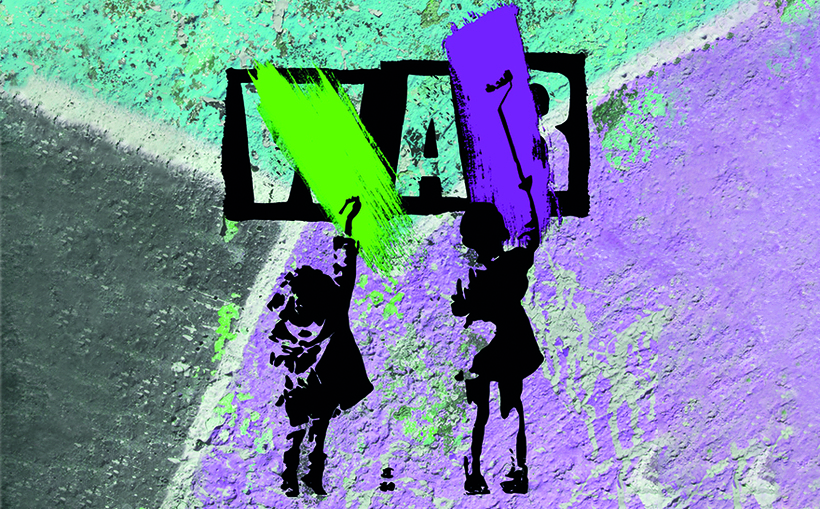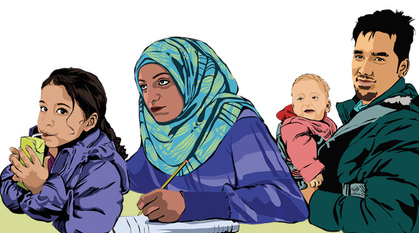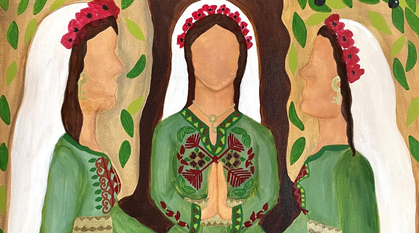Teach Peace Secondary: a timely education resource
In a world racked by war, there is growing demand for peace education. Isabel Cartwright looks at how schools are responding to debates on peace and justice and introduces a new resource that's already helping young people engage with these critical issues.

There's growing concern among teachers about peace. This was evident at this year's National Education Union (NEU) conference. "Children should not pay the price of war", said Daniel Kebede, NEU General Secretary, after delegates passed a motion on Palestine and Israel. "More children have been killed in Gaza in four months than in four years of worldwide wars."
Teachers calling for peace education
Other motions at the conference addressed the violence of racist language in schools and the rise of online misogyny. Each came with a call for peace education. Social media and the growing number of young people accessing disinformation and graphic violence on their phones brings serious challenges. But free-flowing information has also given them a greater awareness of peace and justice issues.
More pressing than ever is the need for young people to be supported to think critically, feel confident exploring social and political issues and become effective local and global citizens. Teachers need to feel it's within their role and remit to build communities of learning that can sensitively explore controversial issues.
This is happening in some schools, and in corners of others. We know that, within weeks of 7 October, the EIS union had gathered and sent teaching materials on Israel and Palestine to all Edinburgh schools. We've had really positive responses to the training we offered with partners on how to approach this topic:
[QUOTE-START]
"Excellent resources and examples of activities I can do in class to help my pupils access a difficult subject."
[QUOTE-END]
And we know from our partnerships with schools that they can create brave spaces, even on the most charged questions. But there are many obstacles still to overcome.
Censorship and shutdown
It's likely that some schools are quiet on Gaza, for instance, because they lack confidence. But, as one student told us, "There's no point in schools avoiding it like the plague, because people need to be educated." Kebede has said that schools are the best place for young people to talk about difficult subjects, but that there's "nervousness in the profession". Sometimes, learning, debate and even compassion are actively stifled.
No More Exclusions (NME), a Black-led grassroots coalition, has highlighted cases across Britain where young people have been forbidden from expressing peaceful solidarity. Consider the marked contrast between official responses to Ukraine and Gaza. Standing with Ukrainian civilians is welcomed; not so for their Palestinian counterparts. This raises troubling questions. One headteacher we spoke to from South Wales said Gaza was tearing his primary school apart. When he'd sought help, he'd been advised to shut down the debate.
This censorship could be motivated by a desire to keep the peace. In their book Positive Peace in Schools, Cremin and Bevington talk about schools using peacekeeping, peacemaking and peacebuilding approaches. All of these may be necessary, but if we focus only on peacekeeping we do nothing to build empathy or understanding and risk alienating young people and causing resentment and division. Stifling critical thinking is also a form of cultural violence.
Teach Peace Secondary
The Peace Education Network has published a new resource to help young people engage with critical peace and justice issues. Teach Peace Secondary draws on expertise from dozens of organisations and covers topics like the arms trade, climate justice, nonviolence, and human rights. It comes with over 50 lessons, which are all free to download from TES.
[QUOTE-START]
This lesson is a great way to start the conversation about peace being more than just the absence of war. I liked the way it links to work on UN Sustainable Development Goals and contributes to UN Rights Respecting Schools, and then starts to make links with what this might look like in the school community.
- Teacher feedback on the 'Positive Peace' lesson
[QUOTE-END]
The lessons link to subjects like Citizenship, Wellbeing, STEM, English, Art, Drama, and Music, and are all mapped to the English, Welsh and Scottish curricula. In just two months, they've been downloaded over 5,000 times. If teachers use each lesson only once, with one class, we've reached around 150,000 young people.
Building peace in schools
Adults shouldn't underestimate young people's capacity for compassion and action. At a sixth form college in Luton, students organised a walkout to oppose their college's partnership with Leonardo, an Italian aerospace company that supplies components to the Israeli military. This led to the college suspending its relationship with the company.
Our vision, as set out in Peace at the heart (PDF), is for every school to develop as a community that's committed to the healthy development of all its members. We want to see schools supporting students and staff alike to build the knowledge, skills and attitudes that enable them to relate well – with themselves, each other and the wider world. That doesn't just mean being nicer to one another; it means finding the courage to look at conflict together.
We call for more funding and support for peace education, including guidance for schools when they are approached by the military or arms companies. The UK has already signed up to multiple international commitments to peace education. That's not a task for tomorrow; it's our job right now.
The Teach Peace Secondary brochure is available to download (PDF) or as a hard copy from the Quaker Bookshop.


